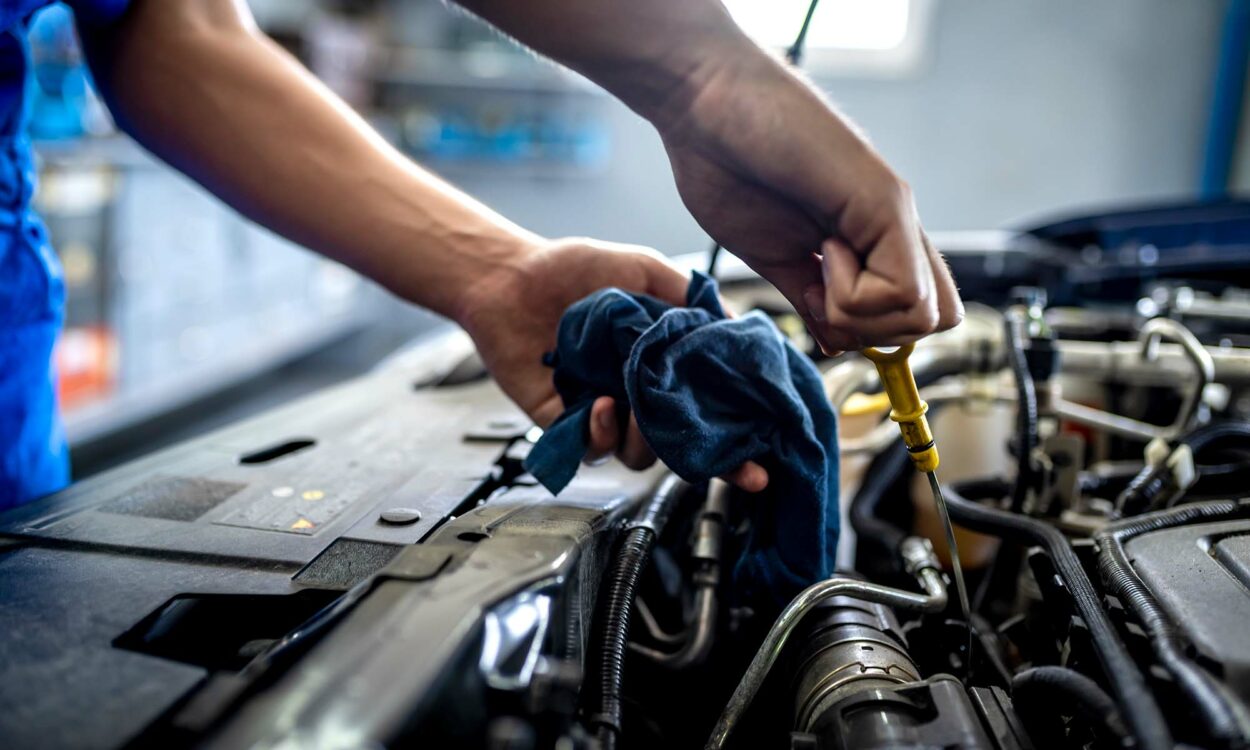Get this deal! Call now.
Speak with a vehicle protection plan specialist and get $300 off any new contract instantly.
Call 866-678-4172
or scan the code below


When you think of October, the odds are that your mind wanders off to thoughts of jack-o-lanterns, scary movies and all the candy you can eat. But, while October always offers frighteningly fun times, it’s also an important time for car owners. In fact, two months stand out throughout the automotive world, with April being National Car Care Month and October as Fall Car Care Month.
Specifically, each month aims to remind car owners that regular vehicle maintenance is essential, especially after the extreme summer heat or the frigid winter weather. However, keeping your ride in good condition goes beyond taking car care month to heart. It’s really about ensuring preventative maintenance happens year-round, so your car is ready for whatever the seasons bring.
The National and Fall Car Care Months are semi-annual occurrences created by the non-profit Car Care Council. Every year in April and October, car owners are reminded that maintaining a car helps foster safety, promote vehicle longevity, and preserve an automobile’s value. But why these two months? Well, it’s pretty simple, as April and October are transition months between seasons.
April is time to check your car for winter-related damage and to prepare it for sweltering heat and summertime travels. Similarly, October offers a chance to check for any repair needs resulting from those high summer temperatures while preparing it for the cold weather of winter ahead. So, while your attention might be more on upcoming holidays like Halloween and Thanksgiving, marking your calendar for Fall Car Care Month should also be on your agenda every October.
Fall Car Care Month can be the perfect reminder to give your car a tune-up to prepare for the changing seasons. It is also a great chance to familiarize yourself with some of the more common fall-related issues vehicles can face, including:
While the occasional tune-up can help any vehicle, especially when the seasons change, following your automaker’s recommended maintenance schedule (often found in your car’s owner’s manual) is the only way to ensure it’s ready any time of the year.
But, for the fall, in particular, there are some maintenance services that you should ensure are taken care of, including:
The best way to preserve tires is through regular maintenance, including regular tire rotations, usually recommended every 5,000 miles. This helps ensure your tires wear evenly, leaving you less likely to experience a tire blowout. During a rotation, a mechanic may also be doing a general visual check of the tires for any unusual wear and tear and giving them a pressure check.
One of the fundamental elements of driving safely during the fall months is having a brake system that operates at peak performance. After all, with the increased chance of rain, sleet or snow, having the stopping power to avoid potential accidents is a must. You can keep your ears open to check your brakes, as many brake pads will begin to “squeal” when worn down.

Getting an oil change and checking the oil filter is arguably one of the simplest yet most vital car maintenance services you can do as it helps an engine operate under ideal conditions while fostering longevity. Most oil change services will put a sticker in your vehicle indicating the date and/or mileage your next change is needed. However, even if you may have some time before your next recommended oil change, getting a step ahead on this service can still be beneficial before the winter hits.
Besides motor oil, your car relies on other fluids to keep things running in good order. That’s why you should check that your vehicle has the recommended fluid levels for the transmission, power steering, brakes, radiator, and windshield wipers.
The fall doesn’t just mean cooler temperatures; it also means shorter days. And with fewer daylight hours, having functioning exterior lights is crucial for the safety of everyone on the road. Better yet, this car care essential is one of the most straightforward DIY jobs you can do, as all you need to do is turn on the headlights and engage the turn signals and the bake lights while you or a friend walks around the car. Check to see that everything is in working order and properly illuminated, and if not, you can quickly get it fixed. This is also a great time to inspect that the cabin and dashboard lights are working, too.
Car batteries don’t last forever (typically three to five years). So, it’s time to test the battery if it’s more than a couple of years old. This is a quick task for a mechanic, and many auto supply stores will check for free.
Those chilly fall mornings and cool evenings are no match for your car’s heating system, so long as it works. That’s why you shouldn’t let climate control troubles spoil the season. To check, start the car and crank up the heat. If you’re not toasty and warm after ten minutes, have the system looked at by a professional mechanic.
While wiper blades can seem in good working order during the summer, the excess heat could cause them to warp or crack. And come the heavy rain, snow and ice of the season, you could find yourself struggling to see out your windshield. That’s why taking the time to inspect the blades is vital. To do so, spray wiper fluid and turn on the wipers. You’re good to go if it clears the windshield without leaving excess streaks or missed sports. If not, don’t worry, as replacing a pair of wiper blades is an easy DIY job or one that a professional can do in just a few minutes at a repair shop.
If you don’t already have a winter emergency kit, now’s the time to put one together. You’ll want to at least have jumper cables, a flashlight, emergency flashers/flares, a fire extinguisher, and a first aid kit. Other helpful add-ons include gloves, extra sweaters or jackets, a shovel, a cell phone charger or a separate battery pack, duct tape, energy bars, drinking water, a rain poncho, an ice scrapper, and emergency blankets.
Following a recommended vehicle maintenance schedule can help ensure your car is ready for whatever the season has in store. But, while important, even the most well-maintained cars can still experience a breakdown. And unless you have an active factory warranty because your car was purchased brand new, you’d be left paying for those repairs on your own. However, with an extended auto warranty (also known as a vehicle service contract), you can get help dealing with unexpected repairs and surprise expenses.
For example, with the coverage of an Endurance auto protection plan, you can get comprehensive coverage for your car’s vital (and costly) components starting at just $79/month. Or, with the Advantage protection plan, you can combine breakdown coverage with up to $3,500 in yearly maintenance services, including essentials like tire rotations, alignment checks, engine diagnostic exams and more.
Like regular maintenance, practicing safe driving tips during the fall can help you and others stay safe while on the road.
With the days getting shorter, you’ll need to be extra aware of your surroundings and fellow motorists earlier in the evening, especially if you live in rural areas or places with no street lighting.

Fallen leaves and wet roads are a recipe for disaster, and freezing temperatures only worsen conditions. Take it slow during or after recent rainfall, and always practice extra caution when driving uphill, on curves, or around corners.
Earlier in the season, you’re sure to encounter pedestrians and bicyclists eager to take in the great outdoors before winter. Likewise, deer and other species will likely be active during the fall. So, be ready for these possible interactions as you head out for local or long-distance journeys.
Speaking of alertness, autumn is the time for fallen tree limbs on the roadway and new potholes to emerge. Be mindful of these conditions that can lead to accidents and expensive repairs.
Fall Car Care Month is the perfect time to ensure your car is free from summer troubles and ready for the colder fall and winter weather. But, while preparing for the seasons and staying up-to-date with your car’s maintenance needs is vital, it won’t prevent every breakdown. That’s why having an Endurance vehicle protection plan is the best way to get the peace of mind you need when it comes to unexpected and expensive repair bills.
Some plans, like Advantage, can even help you save on your car’s maintenance needs and give you breakdown protection. Plus, as an Endurance customer, you’ll be able to enjoy perks like 24/7 roadside assistance, rental car coverage, and trip interruption protection. Plus, regardless of your plan, you’ll be eligible for a full year of free Endurance Elite Benefits, including even more perks and savings like tire replacements or repairs, collision discounts and more.
Find out everything that an Endurance auto protection plan can do for you by requesting a free, no-obligation quote or calling (800) 253-8203 and speaking with an Endurance customer service representative. Or you can also check out the Endurance blog for expert articles on car care tips, DIY maintenance, make and model comparisons, and other helpful topics.

We're here to make sure you get the most comprehensive EV protection. That's why we've partnered with Xcelerate Auto to offer you transparent and dependable Tesla coverage.
Want us to contact you about XCare coverage for your Tesla?



Call for $300 off any new plan!
By clicking the button, you consent to Endurance using automated technology to call, email, and text you using the contact info above, including your wireless number, if provided, regarding auto protection or, in California, mechanical breakdown insurance. You also agree to the Endurance Privacy Policy and Terms and Conditions. Consent is not a condition of purchase, and you can withdraw consent at any time. Message and data rates may apply.
Speak with a vehicle protection plan specialist and get $300 off any new contract instantly.
Call 866-678-4172
or scan the code below



Simply fill out the information below and we will follow up fast with your free no-obligation quote.
By clicking the button, you consent to Endurance using automated technology to call, email, and text you using the contact info above, including your wireless number, if provided, regarding auto protection or, in California, mechanical breakdown insurance. You also agree to the Endurance Privacy Policy and Terms and Conditions. Consent is not a condition of purchase, and you can withdraw consent at any time. Message and data rates may apply.

To speak to a vehicle protection plan specialist and save $300
Scan the code below
Since the age of 16, Keith has been immersed in the automotive industry, beginning his career by helping his dad fix vehicles at a young age. Keith now owns his own family-run, ASE Certified repair shop, A+ Autocare. At his shop, he focuses on building trusting relationships with his community through exceptional customer service. Read more about Keith.